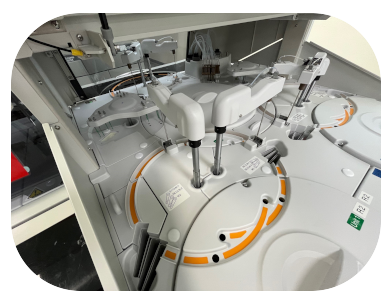CT colonoscopy aftercare
This page contains information for patients who have had a CT colonoscopy at North Bristol NHS Trust.
What can I expect after CT colonoscopy?
You can return to normal activities as soon as the scan is finished. You can return to your normal diet, but we suggest you eat little and often to reduce nausea and bloating. Drink plenty of water for the next 24 hours, as the preparation diet and medication can cause mild dehydration.
Feeling bloated and abdominal (tummy) pain
You may feel bloated, have tummy pain, or pass wind (fart) after the test because of the gas we put in your bowel. This should settle quickly, usually within 2 hours. Eating and drinking normally will help. Food may pass quickly through you for several hours after the examination. If you have diarrhoea up to 4 days after the procedure, contact your GP.
If you have any of these in the 5 days after your examination, phone NHS 111, your GP, or go to the nearest Emergency Department (A&E):
- Severe abdominal pain.
- Bleeding from your rectum (bottom) which is not normal for you.
- Sweating and/or feeling sick or generally unwell.
Possible symptoms from the hyoscine butylbromide (Buscopan) injection
You may have been given an injection of hyoscine butlybromide (Buscopan) to help relax the muscles of the bowel, to get clearer images.
If you have any of these side effects please tell the radiographer:
- Blurred vision - if this happens you need to wait before driving. This side effect is very rare, and your vision should return to normal quickly.
- Sudden difficulty breathing or increased heart rate.
- Feeling faint.
If you have any of the following symptoms in the next 24 hours, please call NHS 111, your GP, or go to to the nearest Emergency Department (A&E):
- A skin rash and/or itching.
- Difficulty breathing and/or increased heart rate.
- Increased pressure behind the eye and/or eye pain (see below).
If you have eye pain in the next 24 hours it is important you go to your nearest eye hospital immediately. Take this leaflet with you as we will write down the drug information you need.
Bristol Eye Hospital is open 7 days a week 08:30-16:30. Outside of these times go to the nearest Emergency Department to you and you will be referred to the on-call eye team.
Alternatively call NHS 111. If you are unsure if you need to go to the Eye Hospital, please call 0117 923 0000.
Please be reassured that these side effects are very rare.
Possible symptoms from the contrast media injection
You may have been given an injection of contrast media to give us a more detailed scan. Complications are rare but some people may experience an allergic reaction.
Please tell the radiographer if you experience weakness, sweating, skin reactions, shortness of breath, or increase in heart rate.
If you have any of these symptoms at home please call NHS 111, your GP, or go to the nearest Emergency Department (A&E). Take this leaflet with you.
Your results
The radiologist will examine the images from your scan in detail and send the results to the doctor who referred you. Waiting times can vary.
- If you were referred by an outpatient department at North Bristol NHS Trust, they will contact you with an appointment or to discuss the results.
- If your GP referred you, they will contact you. If you do not hear from them please call them directly.
- If you have come from the Bowel Screening Programme (BCSP) the results will be sent to the specialist screening practitioner who will contact you.
If you have any side effects or symptoms that require medical assistance from your GP or Emergency Department, please tell the Imaging Department by phoning 0117 414 8989.
The Imaging Department staff will write down
- If you have had hyoscine butylbromide (Buscopan):
- The batch number
- The expiry date
- The dose
- If you have had contrast media:
- The batch number
- The expiry date
- The dose
© North Bristol NHS Trust. This edition published July 2024. Review due July 2027. NBT003705.
Support your local hospital charity

See the impact we make across our hospitals and how you can be a part of it.





